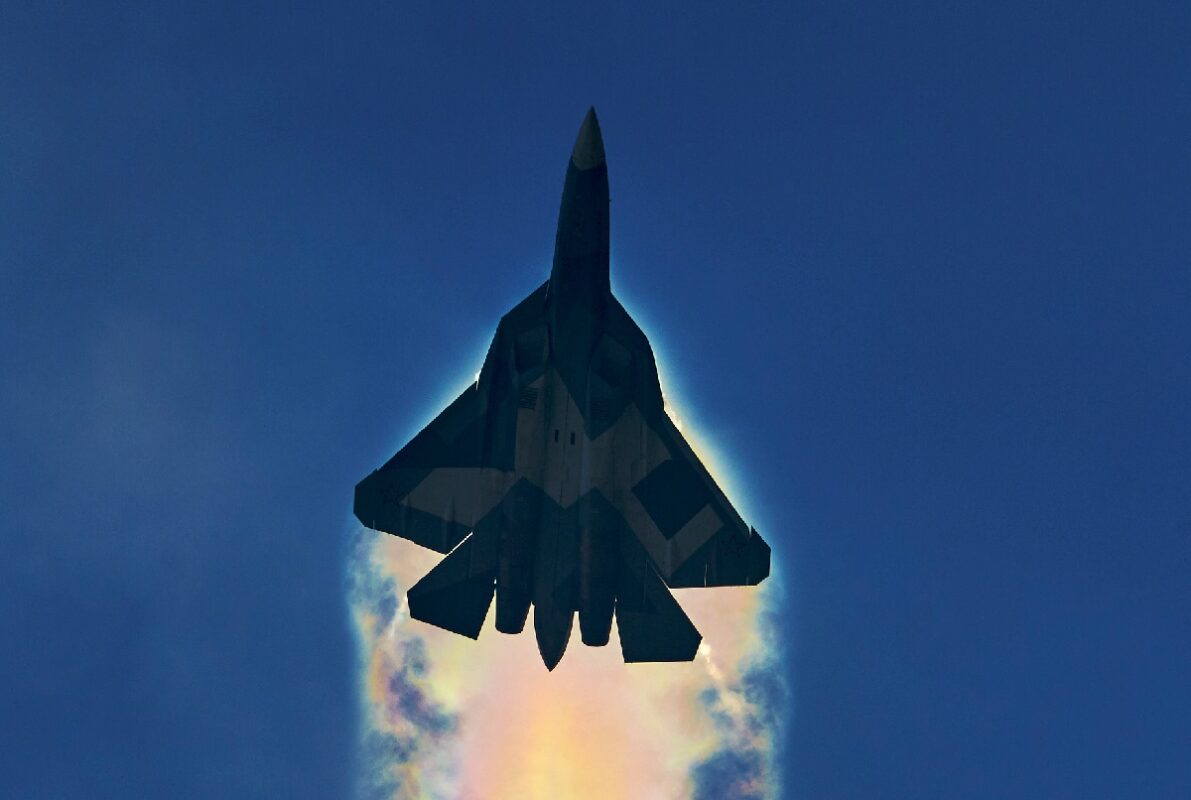Was the Su-57 Russia’s Big Stealth Fighter Mistake? – Moscow has continued to tout the capabilities of its Sukhoi Su-57 (NATO reporting name “Felon“), and there have been claims made that it could rival the United States military’s Lockheed Martin F-35 Lightning II. It has been seen as a potentially dangerous adversary in the sky as it combines stealth and speed with advanced weapons and state-of-the-art sensors.
Developed by Sukhoi Design Bureau and the Russian Aircraft Corporation as part of the Russian Air Force’s PAK FA fifth-generation fighter jet program, the aircraft has been slower to arrive than Moscow may have initially planned. However, the Su-57 will eventually replace the Russian military’s MiG-29 and Su-27 fourth-generation aircraft.
It was the first Russian aircraft to utilize stealth technology, while it was further designed to have supercruise, supermaneuverability and advanced avionics to overcome attacks from the prior generation fighter aircraft as well as ground and naval defenses. Development of the advanced Su-57 began in 2002, but the aircraft only took its first flight on January 29, 2010. The Su-57 is essentially an evolution of the Su-27 Flanker’s shape, modernized for low radar observability while providing even greater maneuverability.
The Felon was initially powered by Izdeliye 117 or AL-41F1 augmented turbofans, while current production batches have begun to incorporate the new Izdeliye 30 engines. The Su-57 is now capable of maintaining a supersonic range of more than 1,500 km – two times that of the Su-27. Because of its improved aerodynamics, the Su-57 can even cruise at Mach 2 without afterburners and has a range of up to 3,500 km while flying at subsonic speeds.
Su-57 – Multirole Fighter
The single-seat, twin-engine multirole Su-57 combines the functions of an attack plane and a fighter jet while the use of composite materials and innovative technologies, along with the fighter’s aerodynamic configuration, ensure that it has a low level of radar and infrared signature. The use of composite materials has reduced the number of parts, but also the overall weight of the aircraft.
In addition to its speed and low radar signature, the Sukhoi Su-57 is a well-armed and combat-capable aircraft. During the August 2013 MAKS Air Show outside of Moscow, the aircraft’s manufacturer highlighted the fighter’s weapons platforms, including missiles that could be fitted into the fighter’s voluminous weapons bays or under its wings and fuselage. The aircraft features two large internal weapons bays arranged in tandem, which run nearly the entire useable length of the aircraft.
Each of those bays can carry up to four K-77M beyond visual range (BVR_ radar-guided missiles. Compared to earlier versions of the K-77 (NATO nickname: AA-12 Archer) the K-77M missile has a larger body and active electronically-scanned array radar seeker, allowing it to engage highly agile targets at ranges of up to 100 miles. The aircraft also stores a pair of K-74M2 short-range infrared-guided missiles in underwing fairings. Russia has announced plans to arm the aircraft with the new R-37M long-range hypersonic missile.
Electronic Co-Pilot
The fifth-generation fighter is also reported to be furnished with the most advanced onboard radio-electronic equipment, including a powerful onboard computer, which has been described as an “electronic second pilot,” the radar system spread across its body and some other innovations, in particular, armament placed inside its fuselage. The Sukhoi Su-57 further utilizes a missile-spoofing turret designed to protect the fighter from infrared-guided missiles. Exactly how successful that could be on a high-flying fighter is unknown, as it has previously largely been employed only on transports and helicopters. Until it was deployed on the Su-57, a spoofing turret never has been placed on the ventral side of an aircraft.

Image: Creative Commons.

Image of Russia’s Su-57 fighter. Creative Commons.

Su-57. Image Credit: Creative Commons.
The Su-57 is also incorporated with 3D thrust vectoring controls that Airforce-Technology reported provides improved maneuverability at high speeds, and which is reported even better than the United States Air Force’s Lockheed Martin F-22 Raptor. That could give the Russian pilots an edge in close-range dogfights.
Su-57 – Is It Really a Fifth Generation Fighter?
Despite the hyped capabilities of the Su-57, some aviation experts have suggested that the aircraft has many of the attributes commonly found in modernized fourth-generation fighters such as the Boeing F-15EX. The Su-57 has also been widely seen as the least stealthy of the current operational fifth-generation fighters.
In addition, despite continued Russian efforts to find an export market for the Felon, it is unlikely that Moscow will be able to reach a full rate of production before the end of the decade.
Now a Senior Editor for 1945, Peter Suciu is a Michigan-based writer who has contributed to more than four dozen magazines, newspapers and websites. He regularly writes about military hardware, and is the author of several books on military headgear including A Gallery of Military Headdress, which is available on Amazon.com. Peter is also a Contributing Writer for Forbes.

